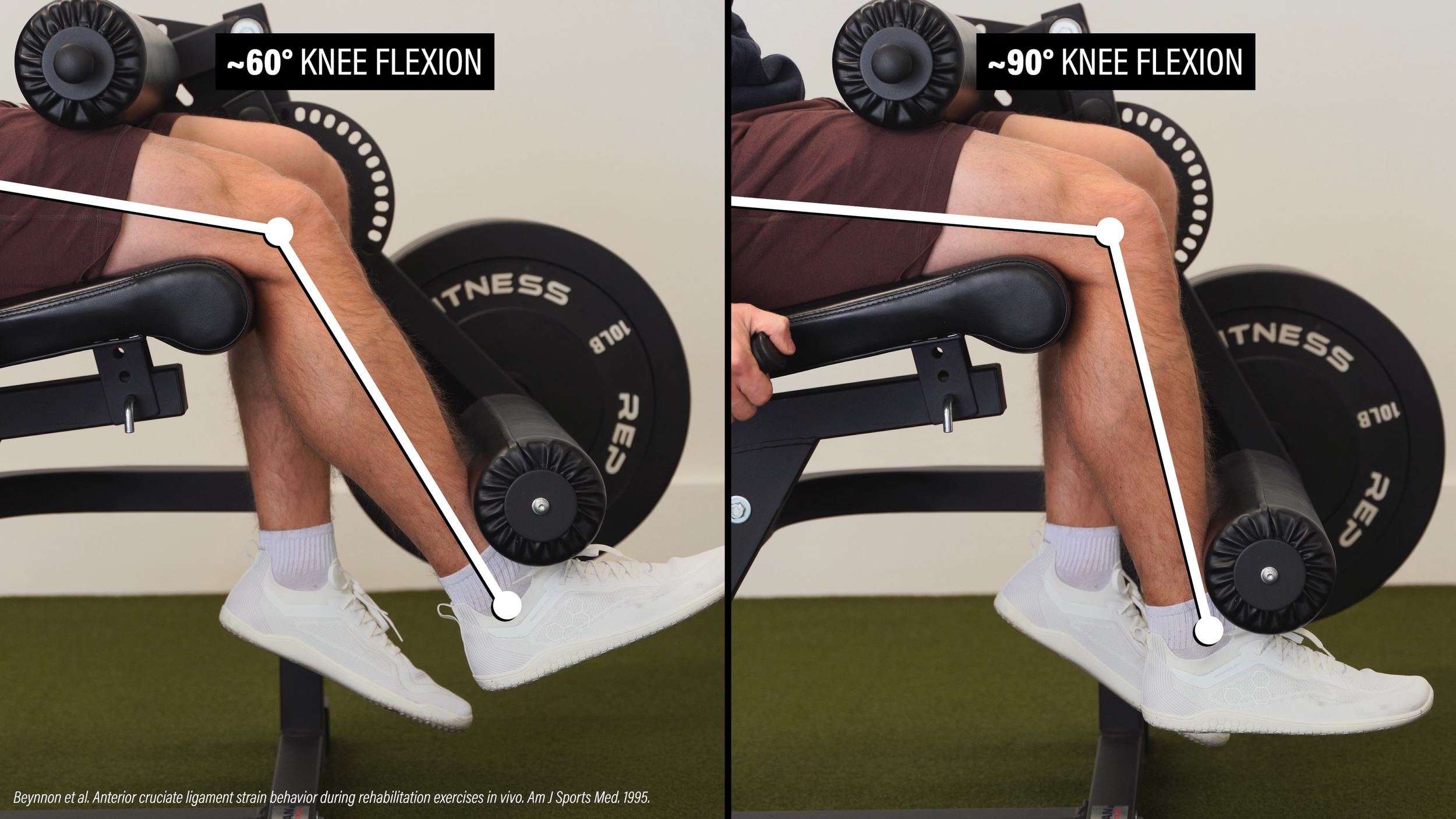Are Leg extensions safe after ACL surgery?
This question has been a bit of a hot topic over the past few years and we are frequently asked by our patients if they can do the leg extension machine after their knee surgery. The answer is yes! However, there needs to be some caution with loading this machine too aggressively in the early phases of post-operative healing.
Why is this machine so controversial?
The Leg extension machine is one of the most essential machines to use throughout the course of knee rehab, mainly due to the fact it is the only way to isolate your quadriceps muscle group .
We know that quadriceps strength is key when it comes to rehabbing knee injuries, which is why we frequently use this machine to catch up any lagging muscle mass or strength.
The reason that leg extensions are considered “terrible” for post-operative ACL it that they place direct stress on the healing tissue- the ACL. In the early phases of post-operative rehab, the quadriceps are extremely weak and are inhibited from producing adequate muscle force due to the swelling/healing from the procedure. When the quadriceps are not able to effectively contract during a leg extension, the knee joint and ACL will take much higher levels of strain.
One of the biggest indications for secondary ACL tears is having asymmetric limb strength. Meaning your surgical leg cannot produce the same amount of force as your non-surgical leg. The leg extension machine, when used properly, can help reduce the loss of strength, improve muscle size and endurance of your surgical leg.
A negative (-) symbol means there was no ACL stress. From this table, we can see that knee extensions at 90° knee bend do not stress the ACL at all and can be quite safe to implement early. This can be done as an isometrics or even partial length repetitions.
When is it safe to implement this machine?
If you are currently going through rehab yourself or are in the early phases of post operative healing, consult with your MD or physical therapy for clearance to add leg extensions into your program.
We know that it is quite safe to work in the 90°to 40° knee flexion in the first few weeks of rehab as long as the weight is very little and not pushed to excessive fatigue. Rehab professionals will generally start with isometrics- meaning you push against something but you don’t move your leg- to build up tolerance to isolating your quadriceps before moving on to full range knee extensions.
Once your swelling has diminished and you have been working on strength for a while, it can be safe to implement full range leg extensions. Again, start with light weight, build up the strength throughout the full motion.
You SHOULD NOT have pain when performing this exercise, if you are trying to implement knee extensions after your knee rehab and having pain in the front of your knee, consult a physical therapist to determine a plan to decrease pain and modify as needed.
We hope that clears up any confusion! In Summary, leg extensions are completely safe to perform in the mid to late stages of ACL rehab and are safe in the early phase of rehab (2+ weeks and on) as long as they are supervised and conservatively loaded.
Citations:
Hettrich C, Dunn W, Reinke E, MOON Group, Spindler K. The Rate of Subsequent Surgery and Predictors Following ACL Reconstruction: Two- and Six-year Follow-up from a Multicenter Cohort. Am J Sports Med. 2013 Jul:41(7):1534-1540.
ACL Strain and Tensile Forces for Weight Bearing and Non—Weight-Bearing Exercises After ACL Reconstruction: A Guide to Exercise Selection Rafael F. Escamilla, Toran D. Macleod, Kevin E. Wilk, Lonnie Paulos, and James R. Andrews Journal of Orthopaedic & Sports Physical Therapy201242:3,208-220


